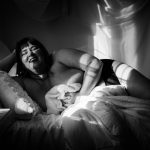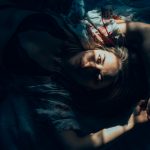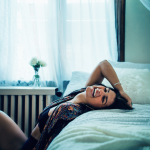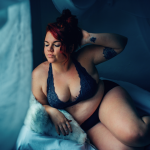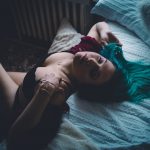Uncovering Columbus: Ryan Miller
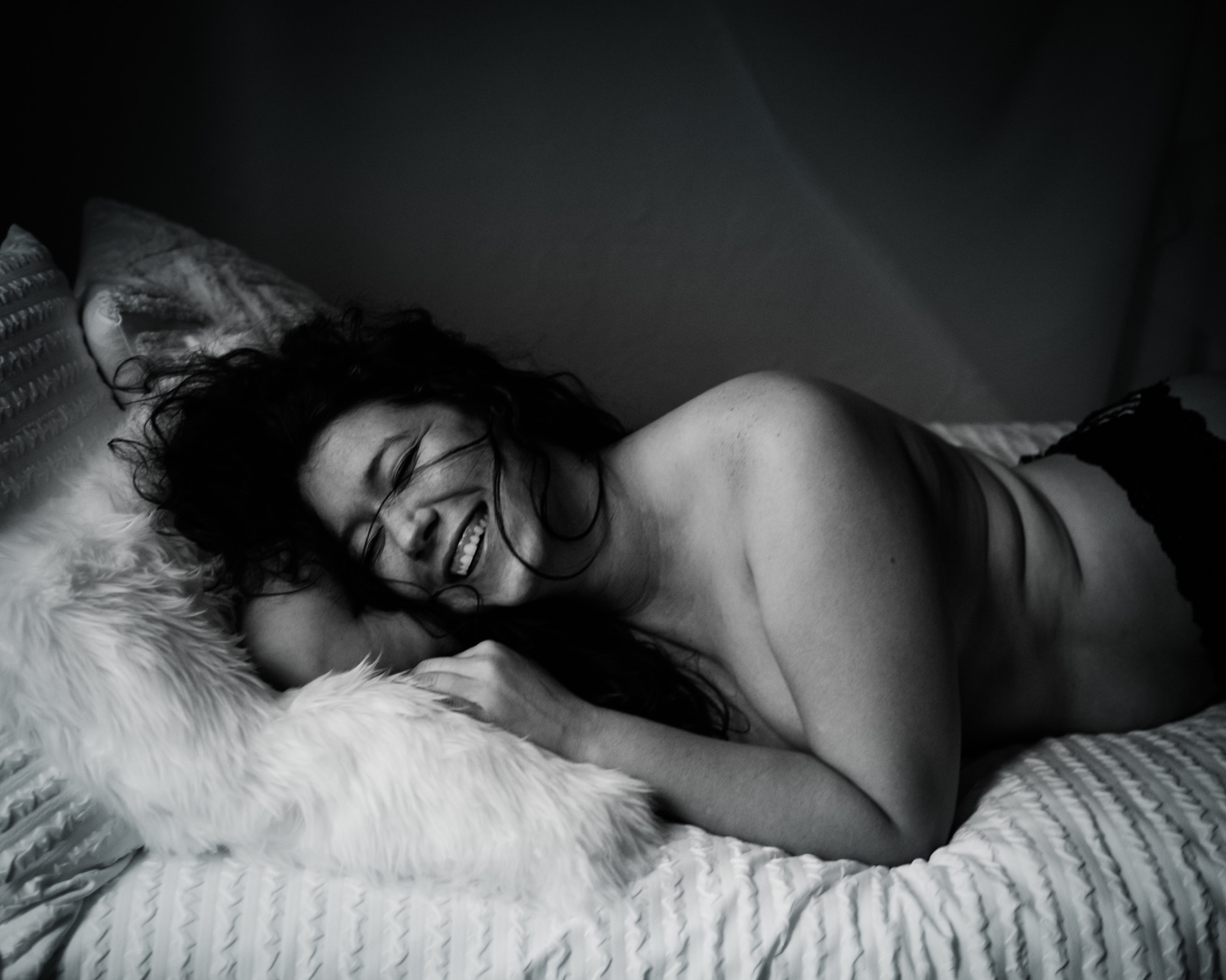
If you’ve moved through the back rows of local shows and shuffled through the seats at a patio near you, there’s a chance Ryan Miller is nearby; the erstwhile DJ has been spinning records at so many events the last five years, he’s a fixture—one easy to just account for as part of the decor.
Such ubiquitousness has only helped to serve his long-standing photography habit, one that has now become a spin-off of his nightlife-life; an honest, authentic, and in-the-moment snapshot of Columbus as it lets its hair down after the street lights come on—captured (mostly) on film and (almost always) in black-and-white.
This month, Miller lets (614) behind the lens to talk about harnessing the hearts and souls of his subjects—whether they be in motion or in pose. – Travis Hoewischer
Tell me the fun and the f*ckery of working with film. Film is fun for a number of reasons, one of which is the reward of having captured something spontaneously (or not) and seeing the results at a later time. There’s no instant gratification with film. Even if you’re developing and processing your stuff, there’s still a lag. The f*ckery would definitely be the occasional chagrin of seeing those results when you totally miss the mark.
I’ve watched your work develop and change over the past few years. What about this particular style has grabbed you? Do you feel you’ve locked into something that feels very “you” as a voice, or lens? I’ve grown to love my little arsenal of “enthusiast point-and-shoots.” I’m sure you’ve seen me with either a Minolta Hi-Matic AF (frequently used by famed Beastie Boys’ photographer Ricky Powell when capturing shots of them, Warhol, Basquiat, Cindy Crawford, etc.) or one of my beloved Olympus Stylus Epics. It takes the work out of the shot. You really do point and shoot. The awesome part about the Stylus Epic is that it was released as the demand for film cameras was about to decline, so the technology is pretty advanced when it comes to the autofocus. It has a fast fixed lens, spot metering; it’s waterproof, and duh, it’s film. That immediacy of claiming the shot in almost any situation is always within reach.
One of my favorite things about this set: often times people focus on B&W photography as if it’s gonna automatically attach an old-school aesthetic to it, but in many cases, it still looks very modern. In many of your shots, it truly looks like a sort of Columbus past. Do you agree? Is that effect somewhat surprising to you after seeing the after-process results? It is surprising sometimes. I am still not always thinking in film, or black and white, so the intent is mostly in a very now/modern context. I find that cars and contemporary fashion help offset the dated appearance. Another thing that I don’t discount is the fact that a lot of my favorite subjects in Columbus are the old buildings and houses that have somehow escaped being demolished or turned into condos. That’s a common thing in most cities these days, especially back home in Charlotte. It’s really gross and depressing. I try to document things that I enjoy because I know they won’t always be around.
How has working with film actually changed how you see things through the lens? Back to “seeing in black and white” and that type of thing… I’m not sure film itself has changed the way I see through the lens, but if I’m using an SLR or rangefinder with manual control dials and knobs, I’m a little more thoughtful about my approach. It’s seems like it’s always about taking risks, as you’re limited to the amount of frames you get per roll. It’s made me a more patient photographer, and more cognizant of how I’m framing a shot and composing my image. It’s influenced my digital photography as well. I’ve actually started to prefer a monochromatic/black and white look more than color lately.
A lot of photography is cultural observation. “People watching,” as it were. Is that part of what draws you to document the goings on around you? I do enjoy the art of observation, especially people in party or social atmospheres where there’s a lot of movement: mentally, emotionally, and physically. I try to feel a place’s vibes out, and also the people. If I can get a good mix of candids and portraits and tie that into a miniature narrative that captures the heart of an event, I’m happy.
How does being a DJ connect with shooting? Is it mostly about reading a room, or people in general—their moods and what they want to express? [Being a DJ] has helped in the “reading a room” department. I’ve spent a lot of time gauging the feelings and attitudes of large groups of people via body language. When taking photos, I use that same skillset. The number one thing it hasn’t helped with, at least in Columbus, is being inconspicuous. •
Follow Miller @georgebrazil and at flaneuryan.com.
BROUGHT TO YOU BY



